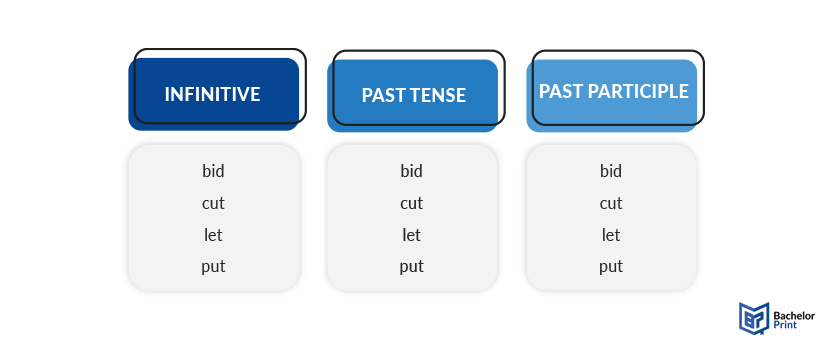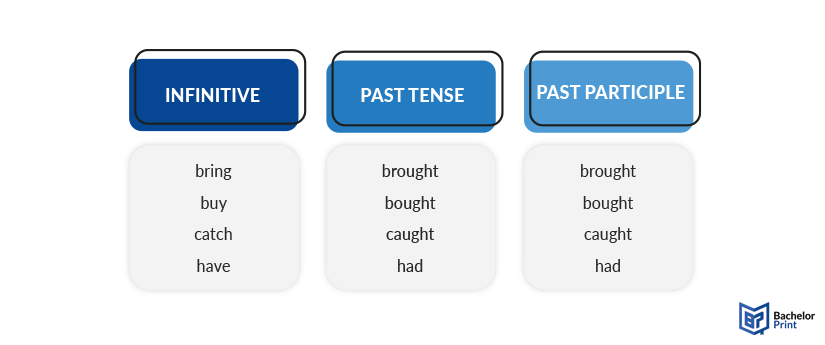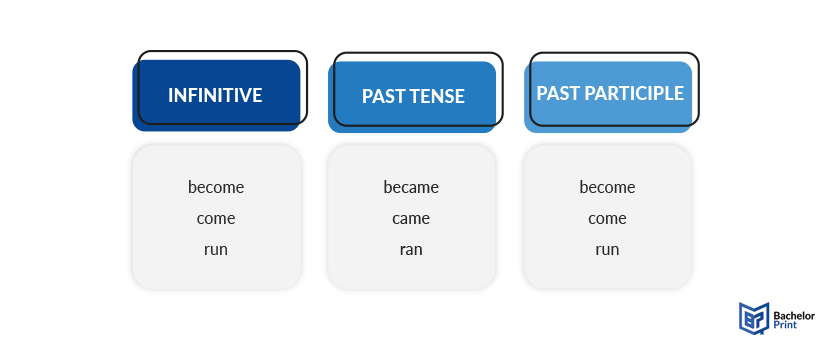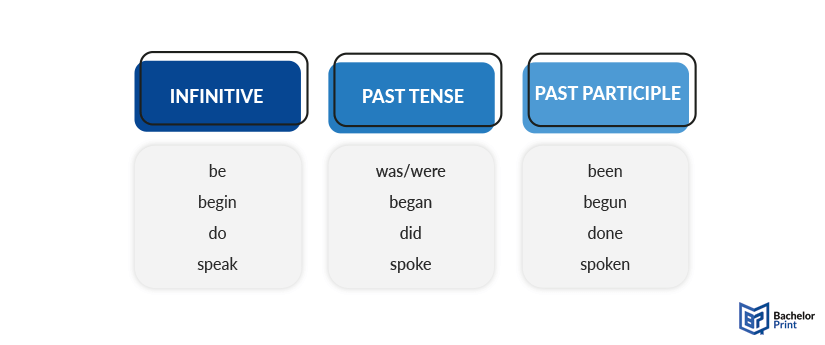
Embarking on the journey of language learning can be both exciting and daunting, especially when confronted with the intricate world of grammar. We will delve into the fundamental concept of simple conjugations through clear explanations, examples, and exercises. Whether you’re a language enthusiast or a complete novice, this article is your passport to unlocking the secrets of verb conjugation rules and taking off on a fulfilling language-learning adventure.
Definition: Conjugation
Verb conjugations refer to the various forms that a verb can take to indicate different grammatical features, such as tense, mood, aspect, voice, person, and number. They give the reader or listener important background information. These alterations adhere to specific language rules that govern how verbs are inflected in different contexts. These changes can include modifications to verb endings, root words, or both.
Basics
When discussing the basic concepts of verb conjugation, it’s essential to cover the fundamental elements that contribute to the variation in verb forms. Below you will find the key basic concepts, which will be explained later in this article.
Person refers to the grammatical categories that indicate the relationship between the subject and the verb. Conjugation forms change to match the person and number of the subject.
- The three persons are first-person (the speaker), second-person (the listener), and third-person (other people or things).
- Number indicates whether the subject is singular (referring to one person or thing) or plural (referring to more than one).
Tense indicates the time at which an action or state of being occurs. Each tense has its conjugation forms that modify the verb to indicate the specific time frame of the action.
- Common tenses include present (happening now), past (already happened), and future (yet to happen).
Aspect describes the nature of the action, whether it’s ongoing, completed, or repeated. Conjugation forms may change to indicate the aspect of the action being described.
- Common aspects include simple (basic form of the verb), continuous (action in progress over a period), and perfect (action completed before a certain point).
Voice indicates the relationship between the subject and the action (or the subject’s role in the sentence). Conjugation forms may vary depending on whether the verb is in the active or passive voice.
- Common voices include active (subject performs the action) and passive (subject receives the action).
Mood expresses the speaker’s attitude towards the action or the reality of the situation. Different moods have distinct conjugation patterns that reflect the speaker’s intent or attitude.
- Common moods include indicative (stating a fact), subjunctive (expressing a wish, possibility, or hypothetical situation), and imperative (giving commands).
Person & number
Before we go into the depth of variations a verb can go through, understanding the relationship between person, number, and verb forms is crucial for conjugations, and for constructing grammatically correct sentences in English. These distinctions help convey precise meanings and ensure clarity in communication.
Number
Understanding the difference between singular and plural numbers is key for ensuring subject-verb agreement in English sentences. Verbs must agree with their subjects in number when conjugating, meaning singular subjects require singular verbs, and plural subjects require plural verbs.
- The singular number refers to a quantity of one. It describes a single person, animal, object, or concept. In the English language, singular nouns and pronouns are used when referring to one individual or entity.
- The plural number refers to a quantity of more than one. It describes multiple individuals, animals, objects, or concepts. Plural nouns and pronouns are used when referring to two or more individuals or entities.
Person
In the English language, there are three persons: first-person, second-person, and third-person.
Pronouns play a significant role in defining the three persons in grammar and verb conjugation. They act as substitutes for nouns and noun phrases, representing the people, animals, objects, or concepts being discussed in a sentence. Pronouns are categorized based on the person they represent.
The first-person includes the speaker(s) or the speaker(s) and others, depending on the context.
The second-person refers to the listener(s) or the person(s) being addressed.
The third-person refers to individuals or entities besides the speaker(s) and listener(s).
Here is a conjugation table to illustrate the use of person and number with the verbs “to be” and “to have.”
| First-person singular | Second-person singular | Third-person singular |
| I am | You are | He/She/It is |
| I have | You have | He/She/It has |
| First-person plural | Second-person plural | Third-person plural |
| We are | You are | They are |
| We have | You have | They have |
Types of verbs
Different types of verbs may have distinct conjugation patterns. For example, irregular verbs may have unpredictable conjugations, while regular verbs follow consistent patterns. Understanding the distinction between regular and irregular forms is essential for conjugating verbs correctly in English verb knowledge. We will talk about each type in this paragraph.
Regular verbs
Regular verbs follow a predictable pattern in their conjugated form. They typically form their past tense and past participle by adding “-ed” to the base form (infinitive). There are also some special regular verbs:
- If the regular verb ends in a consonant, it sometimes gets doubled before adding -ed.
- If the regular verb ends in -y, we change it to an -i before adding -ed.
- If the regular verb ends in -e, we only need to add -d to the base form.
Irregular verbs
The English language also has a set of irregular verbs (about 200) that do not follow the standard conjugation patterns. These verbs have unique forms for different tenses. They can have unpredictable changes in spelling or pronunciation between the base form, past tense, and past participle.
- Verbs with a different infinitive, past simple, and past participle.
- Verbs with the same infinitive, past simple, and past participle.
- Verbs with only the same past simple and past participle.
- Verbs with only the same infinitive and past participle.
Tense & aspect
Tense is a crucial aspect of conjugation, as it indicates the time frame in which an action occurs. English has several verb tenses, each serving a distinct purpose in expressing time-related information. They can be divided into three primary categories: past, present, and future.
Within each category, there are different tense forms that further specify the timing or duration of an action, aka aspects. Those aspects refer to the flow of time and can be factual (simple), ongoing (continuous/progressive), completed (perfect), or completed after an ongoing action (perfect continuous.)
You form the continuous form of a verb using to be + -ing. This -ing form of the verb can be used…
- in continuous (progressive) tenses
- as a gerund, where a verb functions as a noun
- in participles, which can form a verb into a participle adjective or into an adverb
Since all verbs include both tense and aspect, various combinations of tense and aspect, such as past continuous and future perfect, are possible. To put it simply, tense means when something began, and aspect means whether it continued, ended, or had another characteristic.
There are four main aspects: simple, continuous, perfect, and perfect continuous.
Present simple (subject + infinitive)
Used to describe habitual actions, general truths, scheduled future events, or actions that are happening at the moment.
Present continuous (subject + am/is/are + -ing form)
Used to describe actions or events that are currently in progress at the moment of speaking. The suffix -ing at the end of the verb indicates that the action is ongoing.
Present perfect (subject + have/has + past participle)
Used to describe actions or events that started in the past and continue into the present, or have relevance to the present moment.
Present perfect continuous (subject + have/has been + -ing form)
Used to describe actions or situations that started in the past and continue up to the present moment.
For a better overview, here is a table demonstrating the information above with examples of conjugation:
| Present tenses | Examples |
| Simple | She learns English. |
| Continuous | She is learning English. |
| Perfect | She has learned English. |
| Perfect continuous | She has been learning English. |
There are four main aspects: simple, continuous, perfect, and perfect continuous.
Past simple (subject + past form)
Used to describe completed actions or events that occurred at a specific point in the past.
Past continuous (subject + was/were + -ing form)
Used to describe actions or events that were ongoing or in progress at a specific point in the past.
Past perfect (subject + had + past participle)
Used to describe actions or events that were completed before another past action or point in time.
Past perfect continuous (subject + had been + -ing form)
Used to describe actions or situations that were ongoing or in progress before another past action or past point in time.
For a better overview, here is a table demonstrating the information above with example sentences for conjugation in the past tenses:
| Past tenses | Examples |
| Simple | She learned English. |
| Continuous | She was learning English. |
| Perfect | She had learned English. |
| Perfect continuous | She had been learning English. |
There are four main aspects: simple, continuous, perfect, and perfect continuous.
Future simple (subject + will + infinitive)
Used to describe actions or events that will occur at some point in the future.
Future continuous (subject + will be + ing- form)
Used to describe actions or events that will be ongoing or in progress at a specific point in the future.
Future perfect (subject + will have + past participle)
Used to describe actions or events that will be completed before a specific point in the future.
Future perfect continuous (subject + had been + -ing form)
Used to describe actions or situations that will be ongoing or in progress before a specific point or action in the future.
For a better overview, here is a table demonstrating the information above with another example:
| Future tenses | Examples |
| Simple | She will learn English. |
| Continuous | She will be learning English. |
| Perfect | She will have learned English. |
| Perfect continuous | She will have been learning English. |
Voice
In the grammatical context of conjugation, voice refers to the relationship between the subject and the verb, and it indicates whether the subject is performing the action (active voice) or receiving the action (passive voice). In conjugation, verbs can be conjugated in both active and passive voices.
You use the passive, when you want to focus on the action itself, not the performer of the action. You usually form the passive with the correct form of to be + a past participle.
Here’s how the verb “to chase” would be conjugated in both voices:
| Tenses | Active | Passive |
| Present simple | The cat chases the rat. | The rat is chased by the cat. |
| Present continuous | The cat is chasing the rat. | The rat is being chased by the cat. |
| Present perfect | The cat has chased the rat. | The rat has been chased by the cat. |
| Present perfect continuous | The cat has been chasing the rat. | The rat has been being chased by the cat. |
| Past simple | The cat chased the rat. | The rat was chased by the cat. |
| Past continuous | The cat was chasing the rat. | The rat was being chased by the cat. |
| Past perfect | The cat had chased the rat. | The rat had been chased by the cat. |
| Past perfect continuous | The cat had been chasing the rat. | The rat had been being chased by the cat. |
| Future simple | The cat will chase the rat. | The rat will be chased by the cat. |
| Future continuous | The cat will be chasing the rat. | The rat will be being chased by the cat. |
| Future perfect | The cat will have chased the rat. | The rat will have been chased by the cat. |
| Future perfect continuous | The cat will have been chasing the rat. | The rat will have been being chased by the cat. |
Mood
In conjugation, the mood of a verb influences its form and usage in a sentence. Each mood serves a different purpose and conveys different nuances of meaning. It indicates the speaker’s or writer’s intention, attitude, or perception towards the action or state described by the verb. English has three primary moods when it comes to conjugation: indicative, imperative, and subjunctive.
The indicative mood is the most common mood in English. It is used to make statements, ask questions, or express facts or opinions.
The imperative mood is used to give commands, or make requests. The subject (you) is usually implied and not explicitly stated.
The subjunctive mood is used to express hypothetical or unreal situations, wishes, or recommendations. It is often characterized, utilizing the infinitive form of the verb (without “s” in the third-person singular) and specific verb forms for certain expressions.
In “if-clauses” you often use the subjunctive, but the other moods can be used as well. There are four types of clauses, that will be explained below.
Zero conditional
Used to express general truths, where one thing always causes another.
Formed using the simple present tense in both the “if” clause and the main clause.
First conditional
Used to express likely conditions and their probable results in the future.
Formed using the present simple in the “if” clause and the future simple (“will” or “going to”) in the main clause.
Second conditional
Used to express hypothetical or unreal conditions and their imagined results in the present or future.
Formed using the past simple in the “if” clause and the conditional (with “would” or “could”) in the main clause.
Third conditional
Used to explain that current circumstances would be different if something else had happened in the past.
Formed using the past perfect in the “if” clause and the past perfect conditional (with “would have” and the past participle) in the main clause.
Common challenges
Several challenges commonly arise when dealing with verb conjugations in English. These challenges can make learning and mastering verb tense conjugations a complex task. Practice, exposure to the language, and understanding the underlying grammar rules are essential for overcoming these conjugation challenges.
When it comes to mastering complex conjugations of verbs, there is sometimes no pattern to follow, which means that we have to memorize them, and practice, practice, practice. A good way to learn irregular verbs is to study them in groups because, as they are similar, they’re easier to remember. Below, you’ll find pictures of different groups of irregular words. For more common examples and a more thorough look at what auxiliary verbs and transitive verbs are, take a look at our article about verbs.
English has various tenses, each with its own rules for formation. Learning when to use each tense and how to form them correctly can be challenging. However, once you learn and understand every tense and how to build them, mastering tense conjugations of verbs will come easy to you, whether you’re a language learner or not.
Verbs must agree with their subjects in terms of number and person when it comes to conjugation. Understanding when to use singular or plural forms of verbs with different subjects can be difficult, yet crucial for grammar and correct conjugation. Especially in more complex sentences, you can easily lose track, which is why it’s vital to always look at the subject of your sentence before you conjugate the verb in question.
Practice sheet
In this final paragraph, you can test what you have learned about conjugations. The answers for the correct conjugation can be found in the second tab. Don’t worry if you can’t conjugate them correctly the first time; ultimately, it’s all about practice, so have fun while doing so.
- She ____ tennis every Sunday. (to play)
- They ____ movies together on Fridays. (to watch)
- He ____ to school yesterday. (to walk)
- We ____ the museum last week. (to visit)
- She ____ dinner tonight. (to cook)
- They ____ to Paris next month. (to travel)
- He ____ for his exam right now. (to study)
- They ____ in the park at this time yesterday. (to play)
- ____the door, please. (to close)
- Let’s ____ to the beach this weekend. (to go)
- She plays tennis every Sunday. (Present simple, singular)
- They watch movies together on Fridays. (Present simple, plural)
- He walked to school yesterday. (Past simple, plural)
- We visited the museum last week. (Past simple, plural)
- She will cook dinner tonight. (Future simple, singular)
- They will travel to Paris next month. (Future simple, plural)
- He is studying for his exam right now. (Present continuous, singular)
- They were playing in the park at this time yesterday. (Past continuous, plural)
- Close the door, please. (Imperative mood, singular)
- Let’s go to the beach this weekend. (Imperative mood, plural)
numerous advantages for Canadian students:
- ✓ 3D live preview of your configuration
- ✓ Free express delivery for every order
- ✓ High-quality bindings with individual embossing

FAQs
A conjugation is the way a verb changes its form to reflect different conditions (tense, mood, aspect, person, number, and voice) in a sentence.
Common examples of verb conjugation are:
- I eat, you eat, he/she/it eats, we eat, you eat, they eat.
- I have, you have, he/she/it has, we have, you have, they have.
When it comes to the three tenses (present, past, and future), there are four grammatical aspects that change the flow of time in verb conjugation: simple, continuous, perfect, and perfect continuous.
In English, verbs have five different forms of conjugation: infinitive, past tense, past participle, present participle, and third-person singular.




